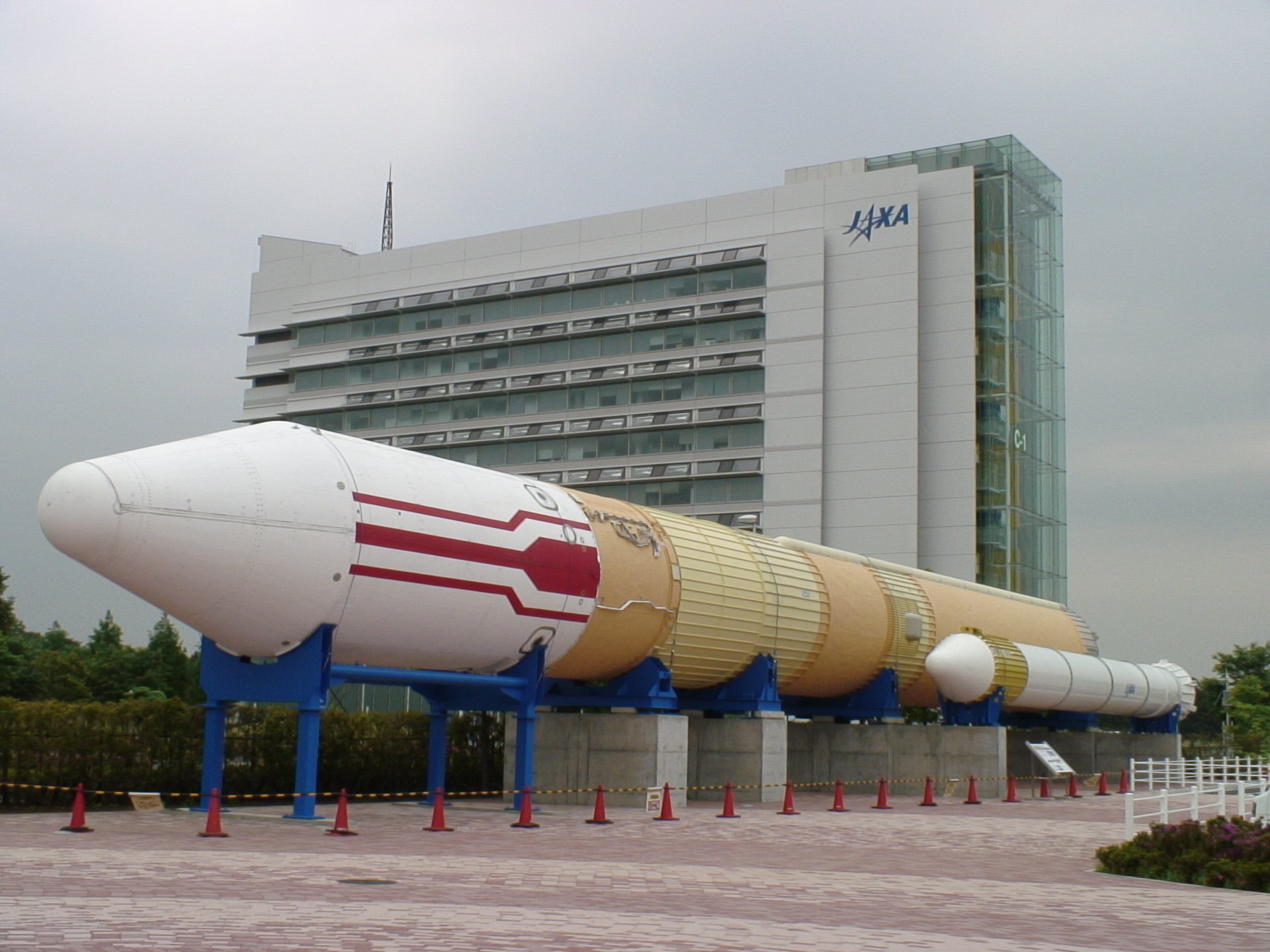
H-II
In-activeMitsubishi Heavy Industries (MHI)
Feb. 3, 1994
Description
The H-II rocket was a Japanese satellite launch system which flew seven times between 1994 and 1999 with 5 successes. It was developed by NASDA in order to give Japan a capability to launch larger satellites in the 1990s. It was the first two stage liquid fuelled rocket Japan made using only domestic technologies.
Specifications
-
Stages
2 -
Length
49.0 m -
Diameter
4.0 m -
Fairing Diameter
4.0 m -
Launch Mass
260.0 T -
Thrust
―
Family
-
Name
H-II -
Family
― -
Variant
― -
Alias
― -
Full Name
H-II
Payload Capacity
-
Launch Cost
― -
Low Earth Orbit
10060.0 kg -
Geostationary Transfer
Orbit
3930.0 kg -
Direct Geostationary
― -
Sun-Synchronous Capacity
―
Mitsubishi Heavy Industries
Commercial
President: Seiji Izumisawa
MHI 1884Mitsubishi Heavy Industries, Ltd. is a Japanese multinational engineering, electrical equipment and electronics company headquartered in Tokyo, Japan. MHI is one of the core companies of the Mitsubishi Group. MHI's products include aerospace components, air conditioners, aircraft, automotive components, forklift trucks, hydraulic equipment, machine tools, missiles, power generation equipment, printing machines, ships and space launch vehicles. Through its defense-related activities, it is the world's 23rd-largest defense contractor measured by 2011 defense revenues and the largest based in Japan.
H-II | MTSAT
Mitsubishi Heavy Industries | JapanTanegashima Space Center, Japan
Nov. 15, 1999, 7:29 a.m.
H-II | Kakehashi
Mitsubishi Heavy Industries | JapanTanegashima Space Center, Japan
Feb. 21, 1998, 7:55 a.m.
H-II | TRMM & ETS 7
Mitsubishi Heavy Industries | JapanTanegashima Space Center, Japan
Nov. 27, 1997, 9:27 p.m.
Status: Launch Successful
Mission:
TRMM (Tropical Rainfall Measuring Mission) is the first space mission dedicated to quantitatively measuring tropical and subtropical rainfall which is one of the most important and least-known parameters affecting the global climate system. ETS-VII (Engineering Test Satellite, "Kiku 7") was launched aboard the H-2 No. 6 rocket from Tanegashima Space Center in November 1997.mETS-VII itself comprises two satellites: "Orihime" and "Hikoboshi". "Orihime" is a target satellite weighing approximately 400 kilograms. It is placed in a fixed circular orbit at an altitude of roughly 550 kilometers. "Hikoboshi" is a chaser satellite, weighing some 2.5 tons. It moves in a variable orbit to rendezvous and dock with "Orihime". "Hikoboshi" is equipped with a six-jointed, three-clawed robot arm two meters long.
Low Earth OrbitH-II | Midori
Mitsubishi Heavy Industries | JapanTanegashima Space Center, Japan
Aug. 17, 1996, 1:53 a.m.
Status: Launch Successful
Mission:
Primary applications of ADEOS (Advanced Earth Observation Satellite), which has been renamed Midori after reaching orbit, include monitoring global environmental changes such as maritime meteorological conditions, atmospheric ozone, and gases that promote global warming. ADEOS was also expected to play a vital role in developing more sophisticated inter-orbit communications and platform technology for the satellite of tomorrow. ADEOS was launched by H-2 Launch Vehicle No.4 on August 1996 and provided a large volume of data containing valuable information about our environment atmosphere, ocean and land for about 10 months until it suddenly got out of control on 30 June 1997 because of the structural damage in its solar array paddle.
Low Earth OrbitH-II | SFU & Himawari 5
Mitsubishi Heavy Industries | JapanTanegashima Space Center, Japan
March 18, 1995, 8:01 a.m.
Status: Launch Successful
Mission:
SFU (Space Flyer Unit) was a Japanese space laboratory launched by the same H-2 + SSB rocket that launched GMS 5. It carried an infrared telescope (IRTS), and instruments and supplies for microgravity experiments. Himawari 5 was a Japanese geostationary meteorological satellite built by Hughes Space and Communications.
Low Earth OrbitH-II | Kiku-6
Mitsubishi Heavy Industries | JapanTanegashima Space Center, Japan
Aug. 28, 1994, 7:50 a.m.
Status: Launch Successful
Mission:
ETS 6 (Engineering Test Satellite) was developed to confirm the technology required for a geostationary three-axis satellite bus system for high performance practical satellites in the 1990's, and to test advanced satellite communications equipment.
Geostationary OrbitH-II | Myojo & Ryusei
Mitsubishi Heavy Industries | JapanTanegashima Space Center, Japan
Feb. 3, 1994, 10:20 p.m.
Status: Launch Successful
Mission:
The Vehicle Evaluation Payload (VEP), renamed Myojo after launch, was a Japanese spacecraft that provided a ranging function as well as functions to measure the acceleration and deformation, in order to confirm the accuracy of the H-2 rocket orbit injection and understand the environment of the payload equipment. The Orbital Re-entry Experiment (OREX), renamed Ryusei after launch contributed to HOPE development by accumulating experience in designing and producing a re-entry vehicle and acquiring re-entry data which is difficult to acquire in ground experiments.
Low Earth OrbitFalcon 9
Pandora / Twilight rideshare mission
Space Launch Complex 4E - Vandenberg SFB, CA, USAThe Pandora small satellite was selected in 2021 as an inaugural mission in NASA’s Astrophysics Pioneers Program. It includes a 0.45-meter telescope …
Falcon 9
Starlink Group 6-96
Space Launch Complex 40 - Cape Canaveral SFS, FL, USAA batch of 29 satellites for the Starlink mega-constellation - SpaceX's project for space-based Internet communication system.
Falcon 9
Starlink Group 6-88
Space Launch Complex 40 - Cape Canaveral SFS, FL, USAA batch of 29 satellites for the Starlink mega-constellation - SpaceX's project for space-based Internet communication system.
Falcon 9
CSG-3
Space Launch Complex 4E - Vandenberg SFB, CA, USACSG-3 is an Earth observation satellite for the Italian Space Agency, part of a reconnaissance constellation using synthetic aperture radars operatin…
Long March 7A
Shijian 29 A-B
201 - Wenchang Space Launch Site, People's Republic of China2 satellites officially described as for "demonstration of new technologies for spatial targets detection" purposes.

